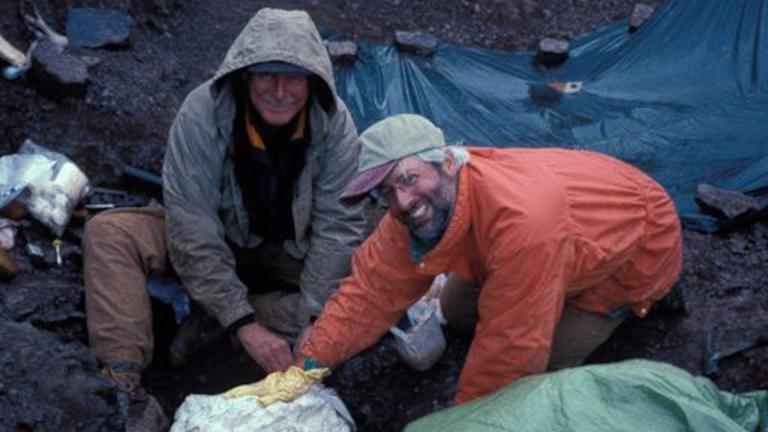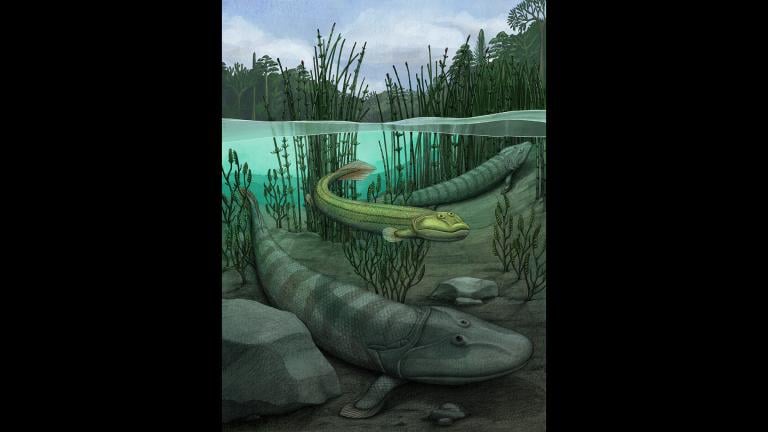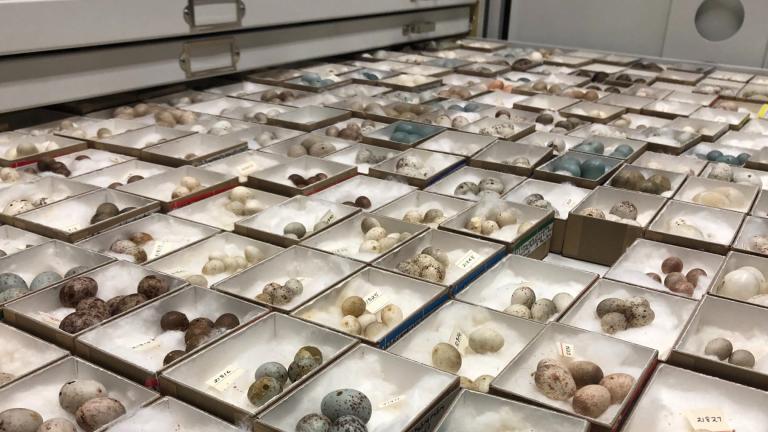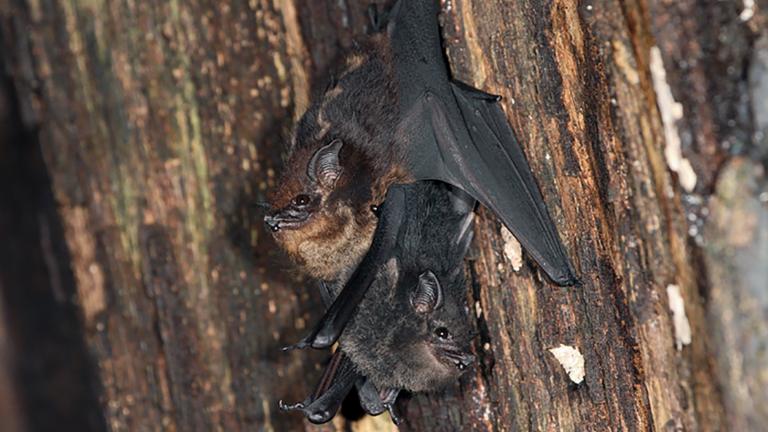Hollywood loves it when giant rocks fall from space, but scientists assure us that the asteroid passing close to Earth tonight will NOT hit us. We have a close encounter with our science guy, Neil Shubin, who also has a little show-and-tell with a huge fossil, in tonight's Scientific Chicago on Chicago Tonight at 7:00 pm. For more on the science stories, check out the info below.
Asteroid Flyby
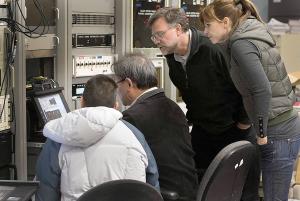 Raise your eyes to the skies tonight for a rare sight – of an asteroid the size of an aircraft carrier passing within the moon’s orbit. According to NASA, the giant space rock will pass within 201,700 miles of Earth, or 85 percent of the way from the Earth to the moon.
Raise your eyes to the skies tonight for a rare sight – of an asteroid the size of an aircraft carrier passing within the moon’s orbit. According to NASA, the giant space rock will pass within 201,700 miles of Earth, or 85 percent of the way from the Earth to the moon.
An asteroid this large hasn’t passed this close since the 1970s, and one isn’t likely to do so again until around 2028.
Although asteroids often come this close without garnering much interest, this particular one’s sheer size may give researchers some important insights into how our solar system, and our planet, were formed. Because this asteroid is made out of carbon, classified as c-type, it is likely of the same kind that struck Earth in its early days, delivering a shot of organic carbon materials, thereby allowing life to form.
Avid amateurs will be able to view the asteroid on any telescope with a light-gathering mirror of six inches or larger if the skies are clear, of course.
For more information, click here. For more viewing tips, click here.
Dark Energy at Fermi
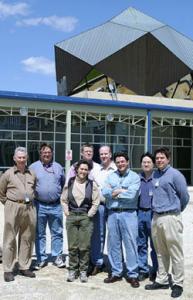 Scientists have known for a while that the universe is expanding. But since better technology afforded more precision in the 1990s, they have also known that the expansion has been speeding up for the last five billion years.
Scientists have known for a while that the universe is expanding. But since better technology afforded more precision in the 1990s, they have also known that the expansion has been speeding up for the last five billion years.
Logic dictates, however, that the rate of expansion should be slowing down, drawn in by the force of gravity. But this is clearly not the case.
The mystery behind the expansion, scientists say, is dark energy. Although it is now being pinned as the force responsible for moving entities apart at an increased rate, scientists are still working to figure out the mechanism by which it works, and also, what exactly it is.
Illinois’ own Fermilab has been working to solve the mystery.
Hoping to scan the skies with greater precision than ever before, the lab has designed a Dark Energy Camera. About the size of the side of a car, it contains 74 detectors; each ‘lens’ is about as large as the size of a regular digital camera. Stationed on a Chilean mountaintop amidst some of the clearest skies on the planet, the hope is that the camera’s extremely sensitive instruments may actually detect the universe expanding.
For more information, click here.
New Fossil Discoveries for The Field Museum
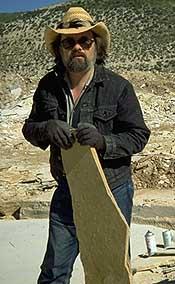 In the southwest of Wyoming lay a subtropical lake system with billions of fish, insect life, replete with crocodiles, snakes and other lizards slithering through the palm trees. Today, it is a quarry in a high mountain desert, bone dry and with freezing temperatures at night, and positively overflowing with fossilized life.
In the southwest of Wyoming lay a subtropical lake system with billions of fish, insect life, replete with crocodiles, snakes and other lizards slithering through the palm trees. Today, it is a quarry in a high mountain desert, bone dry and with freezing temperatures at night, and positively overflowing with fossilized life.
In the summer of 2010, Field Museum paleontologist Lance Grande and his crew discovered ancient imprints of the area’s rich and varied past – a 52 million-year-old ecosystem, preserved in limestone. From the oldest butterfly fossil to the oldest bat, tiny three-toed horses to seven-foot tall predatory birds, the variety of life that once existed in this area is astonishing as indicated by their remains. The details are also extraordinary – a large fish caught swallowing a smaller school, a pregnant stingray with embryos visible inside her, and birds with feather color patterns still intact.
These finds are especially important because it not only gives information about animal evolution over time, but also represents the clearest idea of what life was like between dinosaurs’ extinction and the modern day, when western North America was connected to the Asian subcontinent.
For more information, click here.
Peanut Allergies Discovery at Northwestern
 Peanut lovers rejoice. Researchers at Northwestern University may have found a way to cure peanut, and perhaps many others, food allergies. The pre-clinical study from Northwestern turns the body’s potentially life-threatening immune response on its head, tricking it into thinking the nut proteins are not a threat.
Peanut lovers rejoice. Researchers at Northwestern University may have found a way to cure peanut, and perhaps many others, food allergies. The pre-clinical study from Northwestern turns the body’s potentially life-threatening immune response on its head, tricking it into thinking the nut proteins are not a threat.
Trials have only been completed in mice thus far, but the implications are far-reaching, as peanut allergies in humans are some of the most life-threatening, resulting in up to 200 deaths per year in the United States. In an allergic person, peanut proteins absorbed through the intestine can trigger a full-body immune response, causing constricted breathing, low blood pressure, anaphylactic shock and death.
But now, researchers were able to achieve tolerance by experimenting with a process previously reserved for autoimmune diseases – by attaching the offending proteins (in this case, peanut) onto blood cells and reintroducing them to the body.
The method also increases the number of regulatory T cells, helping to create a more balanced immune system, and integral to recognizing the peanut proteins as ‘normal.’
For more information, click here.

